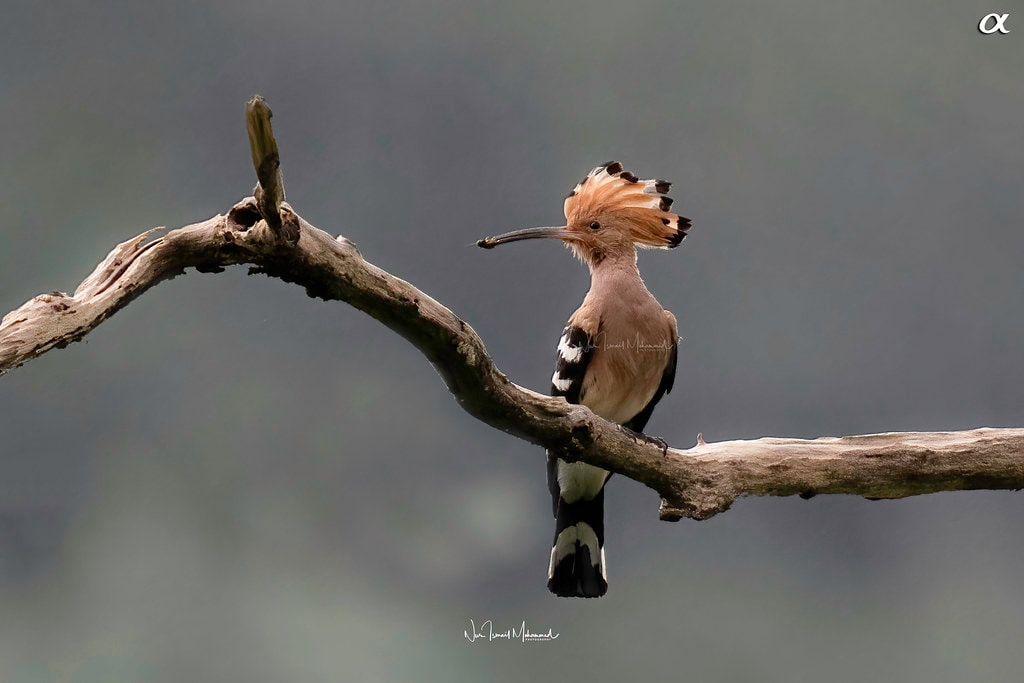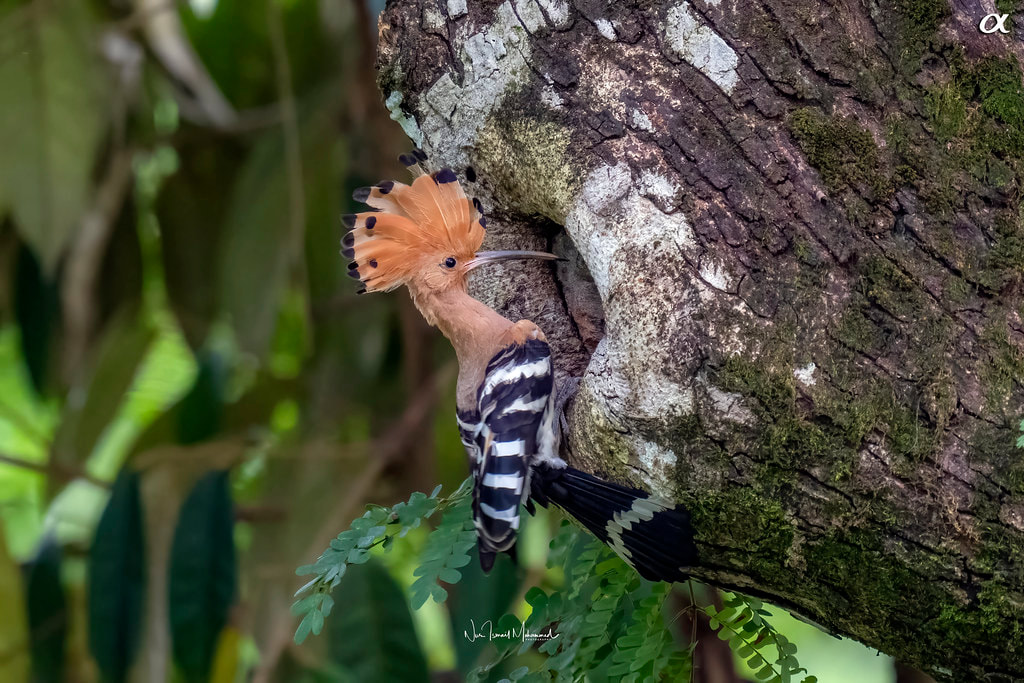|
Hoopoes (/ˈhuːpuː/) are colourful birds found across Africa, Asia, and Europe, notable for their distinctive "crown" of feathers. The Eurasian hoopoe (Upupa epops) is the most widespread species of the genus Upupa, native to Europe, Asia and the northern half of Africa. Some taxonomists still consider all three species conspecific. Some authorities also keep the African and Eurasian hoopoe together but split the Madagascar hoopoe. Three living and one extinct species are recognized, though for many years all of the extant species were lumped as a single species - Upupa epops. Upupa and epops are respectively the Latin and Ancient Greek names for the hoopoe; both, like the English name, are onomatopoeic forms which imitate the cry of the bird. Name: Eurasian hoopoe Scientific: Upupa epops Malay: Burung Hud-hud / Hupo Tunggal Family: Upupidae IUCN Red List (v3.1, 2020): Least Concern Gear: SONY a1 + SEL200600G. Location: Taiping, Perak. The Hoopoe, known as the hudhud (هُدْهُد), also appears with Prophet Sulaiman A.S. in the Quran in Surah Al-Naml: And [Sulaiman A.S.] took attendance of the birds and said, "Why do I not see the hoopoe – or is he among the absent? (20) I will surely punish him with a severe punishment or slaughter him unless he brings me clear authorization." (21) But he [i.e., the hoopoe] stayed not long and said, "I have encompassed [in knowledge] that which you have not encompassed, and I have come to you from Queen Balqis with certain news. (22) Indeed, I found [there] a woman ruling them, and she has been given of all things, and she has a great throne. (23) I found her and her people prostrating to the sun instead of Allah, and Satan has made their deeds pleasing to them and averted them from [His] way, so they are not guided [...]" (24) [Quran 27:20–24 (Translated by Sahih International)]. Hoopoes are monogamous, although the pair bond apparently only lasts for a single season. They are also territorial. The male calls frequently to advertise his ownership of the territory. Chases and fights between rival males (and sometimes females) are common and can be brutal. Birds will try to stab rivals with their bills, and individuals are occasionally blinded in fights. The nest is in a hole in a tree or wall and has a narrow entrance. It may be unlined, or various scraps may be collected. The female alone is responsible for incubating the eggs. Clutch size varies with location: Northern Hemisphere birds lay more eggs than those in the Southern Hemisphere, and birds at higher latitudes have larger clutches than those closer to the equator. In central and northern Europe and Asia the clutch size is around 12, whereas it is around four in the tropics and seven in the subtropics. The eggs are round and milky blue when laid, but quickly discolour in the increasingly dirty nest. They weigh 4.5 grams (0.16 oz). A replacement clutch is possible. Hoopoes have well-developed anti-predator defences in the nest. The uropygial gland of the incubating and brooding female is quickly modified to produce a foul-smelling liquid, and the glands of nestlings do so as well. These secretions are rubbed into the plumage. The secretion, which smells like rotting meat, is thought to help deter predators, as well as deter parasites and possibly act as an antibacterial agent. The secretions stop soon before the young leave the nest. From the age of six days, nestlings can also direct streams of faeces at intruders, and will hiss at them in a snake-like fashion. The young also strike with their bill or with one wing. The incubation period for the species is between 15 and 18 days, during which time the male feeds the female. Incubation begins as soon as the first egg is laid, so the chicks are born asynchronously. The chicks hatch with a covering of downy feathers. By around day three to five, feather quills emerge which will become the adult feathers. The chicks are brooded by the female for between 9 and 14 days. The female later joins the male in the task of bringing food. The young fledge in 26 to 29 days and remain with the parents for about a week more. [Source: Wikipedia]. We are blessed to have a pair of the Eurasian hoopoe, for the first time, nesting at the Taiping Lake Gardens, just outside of Zoo Taiping & Night Safari. The hoopoe's nesting has attracted people from all around Perak to come and see the bird for themselves. In order to safeguard the safety of the nest and any untoward incidence, Taiping Municipal Council, the local authority and Zoo Taiping have placed security guards near the nests for round the clock surveillance. There are also currently constant monitoring of the behaviours and feeding of the hoopoe, which currently being done with collaboration of the Council, Zoo Taiping, Department of Wildlife and National Parks (PERHILITAN) & NESt (Nurture Educate Share Train), a Non-governmental organisation. I'm glad to be part of the group in monitoring the successful breeding of the hoopoe. Here are some of the footage of the hoopoe that I would like to share. #FullFrameLife #MySONYLife #sony #sonymalaysia #a1 #SEL200600G #alpha #AlphaGuru #SAG #NurIsmailPhotography #madebyluminar #skylum #skylummalaysia #luminar #topazlabs #rmco #leofoto #pg1 #Fight4ourPlanet #DiscoverWithMYAlpha #DiscoverWithAlpha #AlphaUniverseMY #mbt #majlisperbandarantaiping #zootaiping #nightsafari #nest #perhilitan #selamatpagimalaysia #hudhud #hoopoe #rare #bird #nesting #tamantasiktaiping #taipinglakegarden #taipingperak #tourismperak
Copyright © 2021 Nur Ismail Photography. All rights reserved. Do not use or reproduce these images on websites, blogs or publications without expressed written permission from the photographer.
0 Comments
Your comment will be posted after it is approved.
Leave a Reply. |
AuthorThis is the photography journey of Nur Ismail Photography where all the experiences from this year onwards will be shared with the audience. In collaboration with NiSi Malaysia, Leofoto, SONY Malaysia and Skylum Software. Thanks for viewing! Archives
August 2022
Categories |







